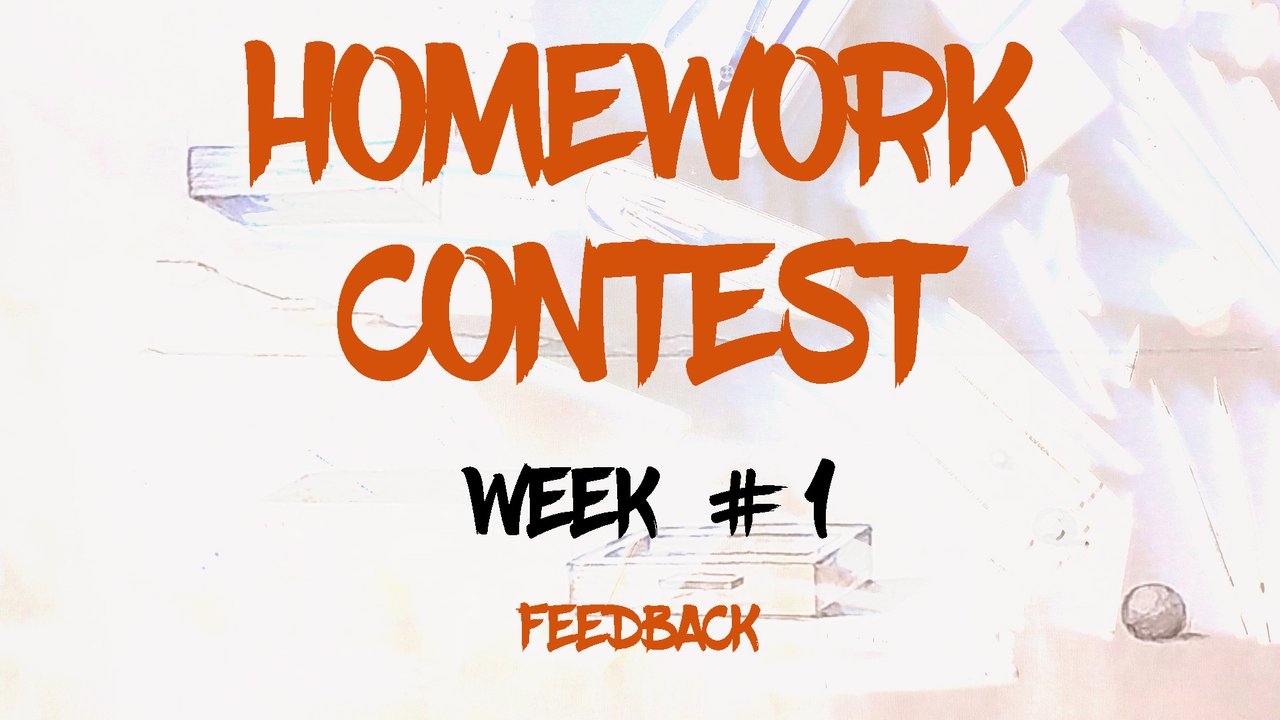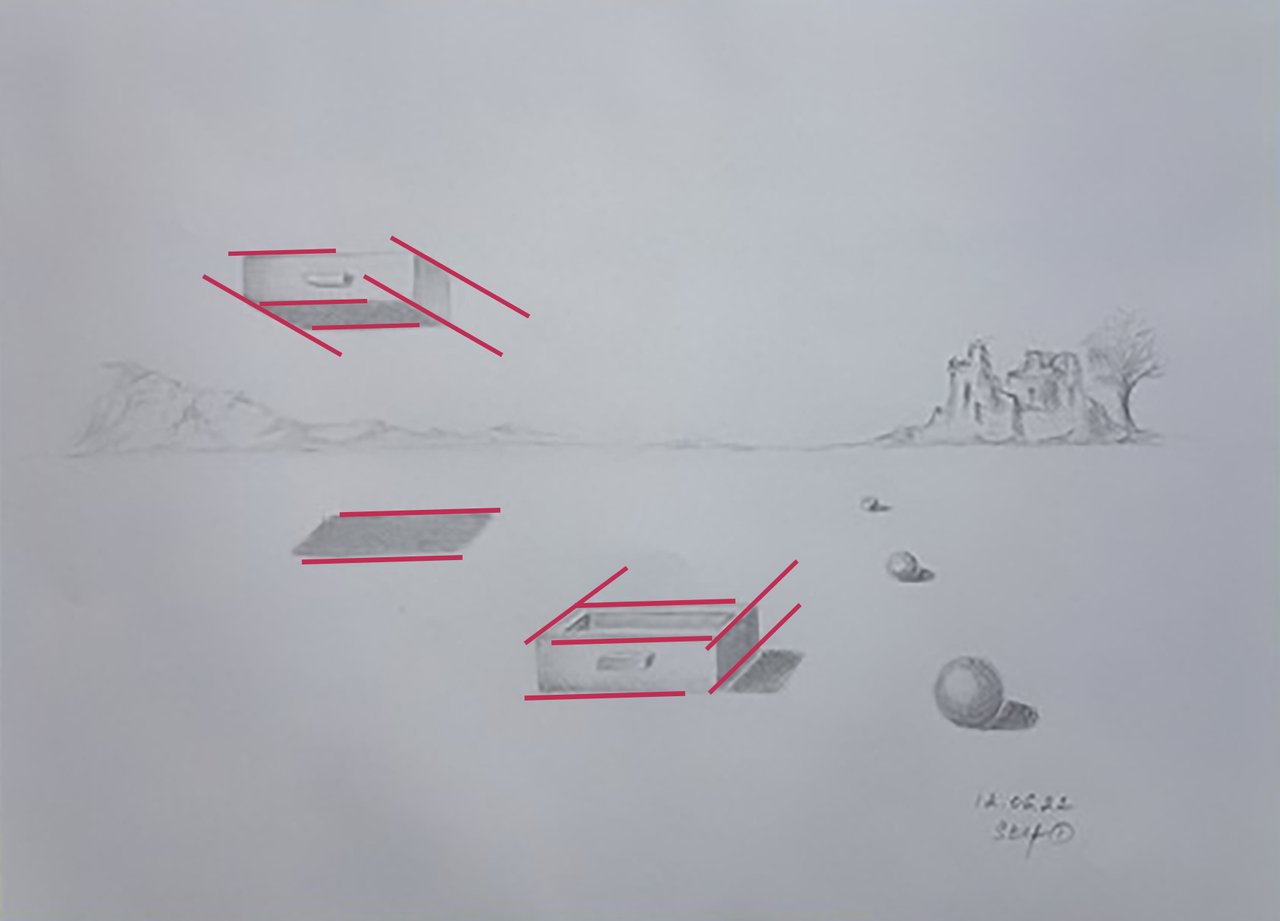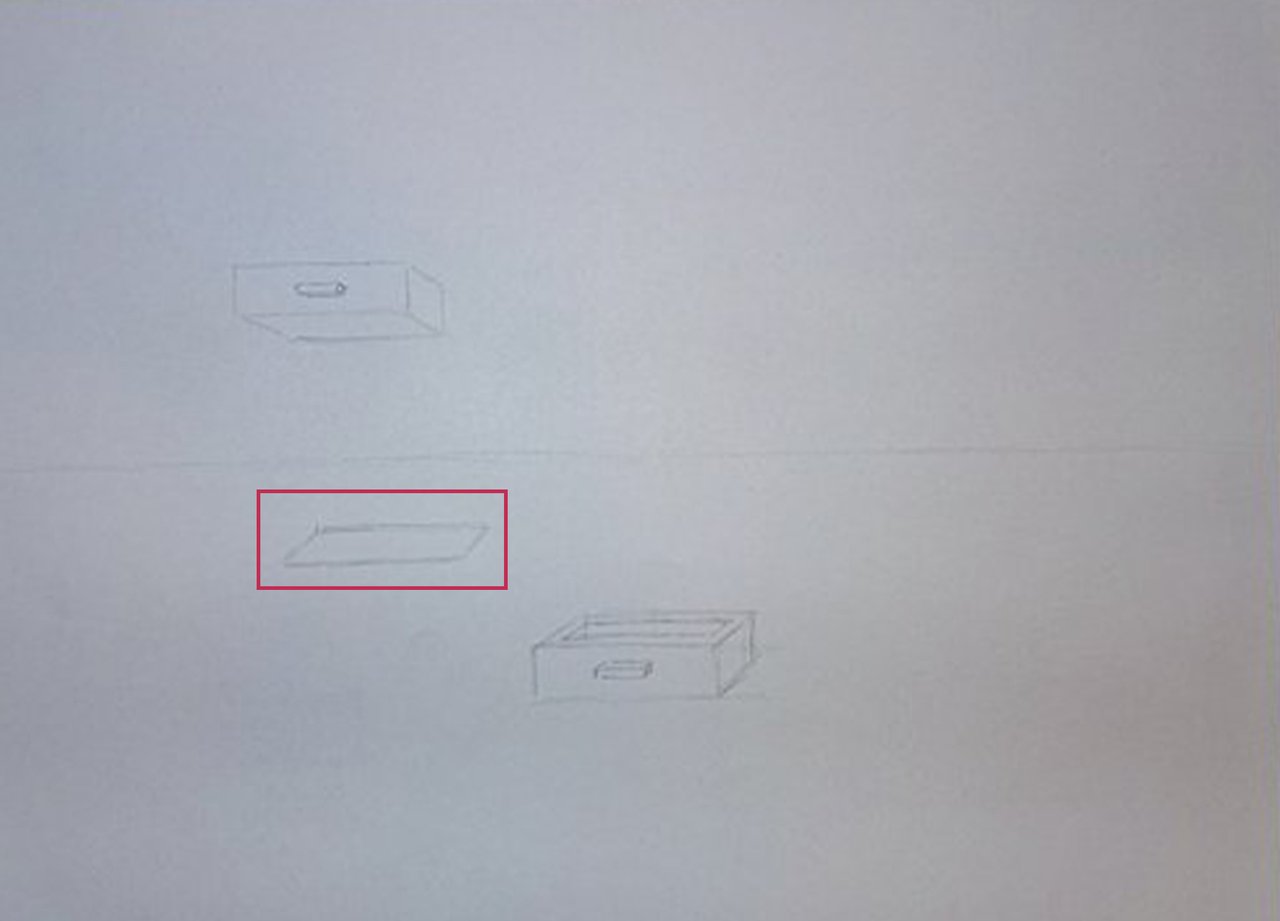
Hi friends!
How?
You will see in the future that each time drawing shapes freehand will be easier, measuring by eye will be more and more precise, I assure you!
In other words, you will now be educating your eye and your hand, just as a musician educates his ear and his hands by practising daily.

The first I see is the drawing of someone who loves what does.
I see a drawing made with love and care and with a good aesthetic sense.
@stef1 found a great solution to hide the difficulty of drawing the horizon line by drawing hills on the left, but she had made her own hills, not a copy of the lines I made in my drawing, that's good.
(As I said before, don't worry if in your first drawings you can't make good straight lines, in the next ones it would be better).
Then on the right, she drew the ruins of a building together with a tree as a very beautiful solution.
The mountains are lighter than the ruins and in the middle of the horizon, you can barely see the lines, which contributes to giving a sensation of more depth, letting us think that there is something more, that the scene does not end there at the horizon line. Very good!
The closet drawers are well done, and the parallel lines are as good as we can expect from a freehand drawing.
The sense of perspective is well achieved through the projection of the oblique lines of the boxes, it was not necessary to be more precise.
The spheres perfectly contribute to giving depth to the landscape, because of their size and the different intensity of the drawing (closer is darker, further away is lighter) and because of the distance between them (the farther the distance, the smaller it should be the separation between them).

The shadows of the shapes (boxes and balls) are too dark, I think it was caused by using a too soft pencil (2B). Only by using the HB pencil, the result would have been better.
Some of us are fooled by our common sense, we often think that all shadows are very dark and flat, which they are not.
The mistake is visible in the first stage of your drawing (below), the lines you have drawn to define the shadow area were too dark, so you had no choice but to draw the shadow as dark as the lines you drew to define them.
The first lines of your drawing should always be very light, only visible to you. (I was forced to draw the first lines darker than necessary in my example so that they could be seen in the video, as I let clarified in the lesson).

Letting a thin white or light line avoid merging two dark areas is a very good solution in painting, but in drawing it does not have the same effect. The difference in tones is the solution and separate them by a more intense line. But in your drawing, you don't leave place for a darker line because the shadows are already too dark.

Nevertheless, the shadows of back on the hills are very well done, because they are been drawn with the same pencil (HB), except, perhaps for little, subtle darker accents on the right side, on the ruins and tree, also very well done!
Some tips:
° Choose your pencils in relation to the size and grain of the paper you will be using. With small size paper and fine grain use HB or B pencils. With coarse grain paper, you can use softer pencils, depending on what you are drawing and the size.
° Try to make your drawing with only one pencil hardness, the result will be more harmonic. For lighter areas, draw light strokes, very light, and do not apply pressure when drawing.
For the darker areas, don't press down on your pencil, instead make several light strokes on top of each other.
° If an area of your drawing is too dark, use a kneadable eraser to lighten it by pressing on it as shown in 11-Masterclass
° Avoid drawing flat areas, instead try making a subtle gradient.
° Let your eyes rest! It is very helpful if before you completely finish your drawing you stop, stop drawing, and come back sometime later and examine it.
It may happen that some things you did, which did not seem right to you at the time, now fit very well in your drawing, or... it may happen that you see errors that you had not noticed before.
So, FIX IT! If you have practised the instructions in the lesson in which I show you how to hold the pencil so as not to damage the paper, erasing will not be difficult for you.
° Finally, think that your drawing is to learn, that does not exclude that it can be an excellent work of art, worthy of being framed. Why not?
I wish you a very nice day and good exercise!
Here are the links to the previous related posts.
1-Introduction - 2-Introduction - 3-Introduction - 4-Introduction -
5-Introduction - 6-Lesson - 7-Lesson - 8-Lesson - 9-Lesson - 10-Lesson -
11-Masterclass - 12-HW Contest - 13-Lesson 14-Lesson - 15-Lesson -
16-Lesson - 17-HW results - 18-Masterclass - 19-HW Contest - 20-Lesson - 21-Lesson - 22-Lesson - 23-HW results
100% SP (manual transfer to SP)
#club100

